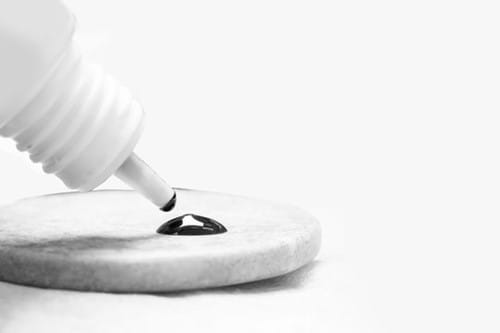Eyelash Extension Adhesive: Everything You Should Know
10 Oct 2022
Eyelash extensions are one of the hottest beauty trends right now, but they're also one of the most complicated. One way to make it easier? Using the right kind of glue. Eyelash extension adhesives are specially formulated for eyelashes, and each brand has different ingredients that help give you longer-lasting lashes. Here's everything you need to know about choosing an adhesive that works best for your needs.
At Megan Thomas Lashes, we have eyelash training courses, lash shop and eyelash extensions. Read more about our services by click the links. We are based in Derby and Kent.
Eyelash Extension Glue Ingredients
While the ingredients of a lash adhesive are typically only found in chemistry labs, the substances used in eyelash extension glue are more common than you might think. The main ingredient is cyanoacrylate, which is also known as Super Glue®. Cyanoacrylates work by creating a reversible chemical bond between two surfaces when they come into contact with each other. A low-viscosity liquid form of cyanoacrylate that has been modified to be safe for use on human skin is often used as an adhesive for eyelash extensions.
Other common ingredients include polymethyl methacrylate (PMMA), hydroquinone (HQ), carbon black—a pigment that gives lashes their color—and acetone—an organic solvent that acts as an additive and solvent solubilizer for HQ.
Because cyanoacrylate is a very strong adhesive, you will want to make sure that the glue you are using is safe for the eyes. This type of glue is not recommended for use with contact lenses because it can cause irritation and damage to your cornea. When choosing an eyelash extension adhesive, look for one that contains acetone as an additive rather than just pure cyanoacrylate. Acetone helps dilute the cyanoacrylate so that it doesn’t bond too strongly with your skin or lashes—which can cause them to fall out.

Ingredients in glues can be toxic.
Eyelash glue is made of chemicals, so it should obviously be treated with care. Some of these chemicals are carcinogenic, meaning they can cause cancer. Glues can also contain formaldehyde, which has been classified as a known human carcinogen and is considered harmful to humans and animals.
Although some people react negatively to certain glues when their eyes are exposed directly to them (and not just from accidental contact), this is rare. However, it's still important for people who work with eyelash extension adhesive on a regular basis or those who have sensitive skin to be aware of potential reactions so they can avoid unwanted harm.
Adhesive formulas vary.
Eyelash extension adhesives are made of varying ingredients. Some have water-based formulas, while others contain oil or alcohol. Some adhesives are ammonia-free, but others do contain it. Regardless of the type of ingredients in an adhesive formula, it's important to find out if you're allergic to any of them before applying your eyelash extensions.
If you'd like to know more about what goes into various eyelash extension adhesives before your appointment for extensions, ask us about his or her preferred adhesive formula and what he or she recommends for you personally.
Lash glue comes in different drying times.
The drying time of a lash glue depends on the formula and the temperature. The formula will also determine how long it takes to dry. In general, silicone-based adhesives are longer lasting than water-based ones.
Silicone-based products tend to take longer to dry because they have more viscous properties (thickness). They also tend to be heavier, which can make the eyelids droop and cause irritation if you don't keep them closed for a few minutes after applying them. It's recommended that you wear cotton or silk eye pads over your lids while waiting for these glues to dry completely before removing them or applying makeup over top of them—otherwise there could be some smudging issues later on!
Glue drying time is affected by humidity and temperature.
It's important to understand that the drying time of eyelash adhesive is affected by the temperature and humidity in your environment. In other words, you'll need to give it more time to dry if you're in a humid climate or using a room humidifier. If it's really cold outside and your window is open, make sure to shut it before applying glue so as not to let moisture into the adhesive.
Temperature also affects how fast this stuff dries. On average, standard eyelash glues will take about 15 minutes (or less) at room temperature (around 21 degrees). If you live somewhere with high temperatures or hot weather, however, make sure not to leave them exposed for too long—they may begin melting!
Conclusion
We hope this article has helped you understand the different types of eyelash adhesives available. Eyelash adhesives have come a long way, and they can now be used safely on your own lashes. if you want more info about what we offer and Megan Thomas Lashes then get in touch now. Eyelash training courses, lash shop and eyelash extensions
Get in touch now!
Contact Megan Thomas Lash Academy with the below WhatsApp, Messenger or Email links:

Address
44 Shaldon Drive, Derby, DE23 6HY, East Midlands


